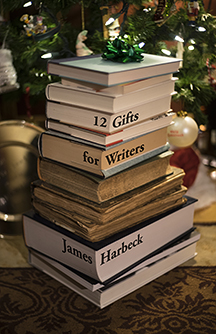Paper, in general, is hard.
We may be used to thinking of paper as soft. It bends, doesn’t it? But take a dozen or a score of pages, a quire or even a ream, and pinch. It doesn’t give. Not most kinds of paper, anyway. Crumple a sheet of printer paper and rub it against your face. Not exactly pillowsome, is it? Run your finger along the edge of a single page. Oops. Feathers don’t cut you like that.
But not all paper meets the fingers the same way. And while the paper in many books is merely functional, cool and flat and impersonal and barely textured under my fingers like an institutional wall, some paper has a rich texture. Some has a soft give. And, yes, some bends more than other. But the bend and the texture and the softness are entirely separate things.
The bright, white knife of a sheet of an educational trade paperback is no pleasure to my fingertips, no matter how exquisite the words are (or aren’t). The pulpy paper of mass market paperbacks is softer, but it my fingertips feel it like my tongue feels the grainy pulp of gluten-free bread. You know it dreams of being sandpaper but lacks the strength of character. But there are other books on my shelves that hold more promise.
Here is a falling-apart paperback about the playwright Goldoni, in Italian, printed in 1927, held together with library tape and rescued from the discards at Tufts University. Its ruffling edges stack variously like the meat and cheese in a Dagwood sandwich – no fear of slicing my fingertip. I can squeeze the book and it gives a little, like the firmest rubber. It has a warm yellow colour, too, and each page greets the eyes with a ripply texture somewhere between canvas and sandstone. But it is dry, and leaves my fingertip feeling almost dusty.
Here is a little Latvian-English phrasebook, barely more than four by five inches and not even half an inch thick, with a fabric-bound hardcover impressed with gold type in a modern woodcut style. Its pages are almost Bible-paper thin, just a bit stronger and a bit less ripply than onionskin. Run the pad of your finger over a sheet and you can feel the impressions of the letters on the other side. Rub a page between your fingers and it gives friction; rub two pages together and they slide apart obligingly, no need for licking your digits. It is not a hedonistic experience, this paper, but it is like dealing with a politely efficient servant – or teacher.
And here is my undated Hodder and Stoughton edition of the Rubáiyát of Omar Khayyám. It, too, has a hard cover with fabric glued on, intagliated with a gold design and title. But it holds within it a garden of varied delights. This book – nearly two inches thick – contains fewer than two hundred pages, each printed on only one side, each as thick as a slice of meat, or cheese, or bread. Well, thin bread, but also firm. These pages barely bend, but they have three full dimensions; each one curves at its edge, bends away softly like the horizon, and the edge will never wound you. You could almost pet it like the spine of a cat. The pages don’t disappear into the gutter in the middle, either; you can see the dimples and pimples where the stitches bind them. You can pinch a single page and almost swear that it gives a little, and its surface has a texture like that of a few-days-old cracker. And then, interleaved with the pages of verses, are a dozen colour plates, each one on half-glossy paper glued on one edge to the firm page below, each one protected by a paper veil glued on one edge to cover it: a page as translucent as a fine cotton bedsheet, and with the texture of your best white shirt – not floppy like fabric, still paper, but coyly, gracefully rippling under the fingertip, revealing when bidden and then settling back flat.
“The Moving Finger writes; and, having writ, Moves on” – so says Edward Fitzgerald’s rendition of Khayyam. But on the reader’s side of the shimmering veil that is the page, the moving finger touches, caresses, runs along the lines, and as the eye sees the words, the finger senses the texture and yield of the book’s silent body.






Pingback: chillsome | Sesquiotica